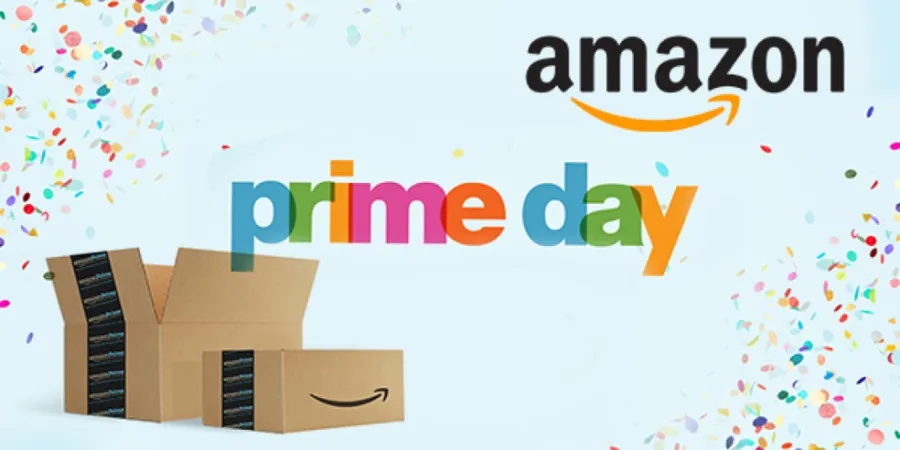When Prime Day 2018 began at 3pm EST on July 16th, Amazon.com couldn’t handle the traffic. For the first six hours or so, the site was very limited in functionality, crashing frequently for many shoppers. Even with this major hiccup, the event was phenomenally successful, with July 17th setting a new record as Amazon’s biggest day of sales. All signs point to Amazon breaking that record yet again – so brands need to start prepping for Prime Day 2019.
With Prime Day, Amazon aims to deliver very visible benefits to Prime members in order to maintain their loyalty and attract more subscribers – and there’s no question that it’s working. Prime Day has grown into a global event, consistently breaking Amazon’s sales records and driving the success of some of today’s most popular products such as the Instant Pot and the LifeStraw.

Originally a 24-hour event, Prime Day has been growing in duration every year, so we wouldn’t be surprised if it reached the 48-hour mark this year. It has historically fallen on the 2nd or 3rd Tuesday in July (Amazon typically announces the timing in mid-June), so our prediction for a 48-hour event would be July 16th plus the day before or after.
According to Amazon sources, a focal point in 2019 will be to brand Amazon Prime as ‘fun and exciting’. To keep the excitement levels high, expect a second annual Amazon Music Prime Day Concert in New York, which was headlined by Ariana Grande in 2018, as well as further integrations across platforms such as Twitch and into Amazon’s physical stores including Whole Foods, Amazon Books and probably Amazon Go.
Advertisers across the board will be thinking about upping ad spend significantly on Prime Day, especially in light of last year’s door-crashing (and site-crashing) traffic. This creates a snowball effect: more ad spend drives up prices, so in order to win advertisers will need to invest more – and smarter – than usual.
Prime Day Prep: 4 Strategies to Remember
1. Deals, deals, deals!
What is the point of Prime Day if not to hunt for deals? This is the day for brands, sellers and advertisers to go all in and put your best deals on the table and earn the premium placement which can make your day exceptional.
Amazon ranks deals based on a mix of sales velocity in units and dollars (the exact details are kept secret) and in 2018, the biggest deals were spotlight Deal-of-the-Days. That’s not going to change in 2019, but we expect a lot more effort on Amazon’s part on improving the discoverability of Lightning Deals (LDs) and Prime Member Promotions (PMPs). Don’t put all your eggs in one basket: mix in a variety of deal types and involve your full catalog to maximize your reach. And don’t be afraid to be aggressive: a good deal is the key to a customer’s heart.
2. Lead-up and lead-out.
The general idea is that shoppers are holding out for Prime Day and so are going to spend less immediately before and afterward – but the lead-up and lead-out periods can be very valuable if you account for changes in consumer behavior.
During Prime Day, shoppers look for ‘great deals’ – nice-to-have big ticket items they wouldn’t spend full price for. During lead-up, consumers will be browsing Amazon in anticipation of Prime Day so you might consider shifting budgets to drive conversion of less flashy, lower-cost necessities. During lead-out, focus on what you can ‘attach’ to those big ticket deal items in order to drive a long-term lift in sales, such as attachments or recipe books for a blockbuster kitchen appliance.
3. Gift cards work!
Another strategy during lead-up is to invest in gift cards. Gift cards may get a bad rap, but in the right conditions, such as when people are already planning to spend a lot of money, consumers think of gift cards as equal to cash.
During the lead-up period, consider offering a product + gift card promotion in place of a straight discount; with a major deal day on the horizon, shoppers are more likely to view them as interchangeable. An Amazon Gift Card bundle allows you to maintain your pricing and deal quality for Prime Day while still driving sales and taking advantage of placement on the deals page during lead-up. Fun fact: the Amazon Deals Page is the second highest trafficked part of Amazon (after the Gateway).
4. Follow the money.
In 2018 Amazon expanded Prime Day into physical retail for the first time by offering deals at Whole Foods. Certain items were labeled with a ‘Prime Code’ which members could scan using the Whole Foods Market app in exchange for discounts and also offered a ‘spend $10 at Whole Foods, get $10 to use on Amazon during Prime Day’ deal. But this was likely just a trial for a much bigger rollout across Amazon properties in 2019 (remember – ‘fun and exciting’).
To predict where Amazon will invest most heavily this Prime Day, you just need to follow the money – Twitch, Whole Foods and Amazon’s other physical stores have been among the retailer’s highest priorities over the past year. Try to have a presence in every area where the retailer wants to succeed because Amazon knows the value of Prime Day and they will go above and beyond to maximize it.
Prime Day is Amazon’s most important day of the year. Once again, Prime subscribers old and new will flock to Amazon.com in the very first minutes of Prime Day to hunt for the best among the millions of unique deals on offer – and the impact will be felt across the digital marketplace. A well-executed Prime Day marketing campaign can elevate a brand to a new level and generate a lift that will last months if not years. Amazon advertisers need to be ready to face strong competition, to invest heavily and intelligently and to work with Amazon to create the optimal conditions for success.













